How the Sex Pistols, Fight Club and James Dean made the new Dante
The creation of the reboot everybody loves to hate.
The new Dante - Ninja Theory's Dante - is an arsehole.
But then why shouldn't he be? He's had a tough life. The memory of his dead mother, fused into a pendant he wears around his neck, weighs on him like a ball and chain. His father, disappeared, is a mystery. As a teenager he was stabbed in the heart during a fight, a moment that made Dante realise - while jabbing his thumb into the open wound - that he cannot die, that he is not human, that he is something else. Maybe he's a monster. He is often dragged into the demon city Limbo. He is truly alone, troubled, confused, angry, selfish - caring for nothing but himself.
This is the new Dante's story, created by a UK developer in Cambridge for a Japanese publisher in Osaka. We've never cared before. Capcom Japan's Dante, with trademark blood road trenchcoat and striking white hair, is an anime rockstar with few complications. He is super cool, stylish, sword and guns firing bullet hell at nightmarish demons. But we never cared why. We grabbed the pad to slice demons into little pieces, each cut cooler than the last, agog at the smoothness and responsiveness of the carnage.
When Capcom came knocking on Ninja Theory's door four years ago, it asked for something different. It asked for a reboot seen through western eyes to widen the audience for a series that over the course of four games had grown increasingly insular. It asked designer Tameem Antoniades to imagine what Dante would look like if he was in a Hollywood movie.
If at first you don't succeed...

Ninja Theory's unremarkable office is in a building in a business complex a 10 minute drive from Cambridge train station. Inside, a lobby houses a glass cabinet packed with awards and merchandise of past games - Enslaved for Namco Bandai, Heavenly Sword for Sony, and, going back further, Kung Fu Chaos, the 2003 Xbox game made by Ninja's previous incarnation, Just Add Monsters. Two odd sculptures sit next to the reception desk - cold angular faces, one large, one small. Tameem tells me he's storing them for their creator, his uncle. I suspect there's more to that particular story.
There's more to DmC's story, too.
How do you make a Japanese combat game set in a western world? If you're Ninja Theory, you start with Photoshop.
The old Dante, that iconic white hair, that blood red trenchcoat, the original demon slayer, dragged and dropped into that iconic still from Fight Club - a semi-naked Brad Pitt, battered and bruised, fag hanging out of his mouth, looking down at the man he's just smashed to bits with his bare hands, triumphant, glorious. Next to him is the old Dante, that iconic white hair, that blood red trenchcoat, the original demon slayer, and he looks ridiculous.
This, Tameem says, highlights the difference between Japan cool and west cool. Japanese bands are all spiky hair, studded jackets, green face paint and flamboyance. Our bands are downtrodden, a style made magic by Joy Division, "the original band that under dressed and did everything they could to not appear to be cool". On the streets Japanese sub-cultures go out of their way to express themselves with clothes that scream face paint and peace signs. Here we avoid labels (while secretly loving them on the inside) and being ostentatious.
Tameem's presentation is packed with pictures: Matt Damon as Bourne, Ryan Gosling in Drive ("if you did a concept image of Gosling and showed him to people in a focus test and asked, is this guy cool, they probably wouldn't say he was"). How would a video game character look if built with western film stars in mind? How would Dante look?
Ninja Theory turned to Rebellion, Dante's sword, for inspiration. Rebellion, and being rebellious, was an idea that stuck. Ninja looked at its rebellious influences: The Sex Pistols punk, The Clash, James Dean, the Beat Generation and Jack Kerouac: "We thought, what would the rebel without a cause look like now?"
"We were told to take the opportunity and not make a clone of DmC 1-4," Tameem says. "Don't make a Japanese game. Make a western game. And so we embarked on it the way we would design any character from scratch and any world from scratch, from the ground up."
For three months things didn't go according to plan. Ninja Theory's early concept art came out as anime fan art. It was too close to the original Dante design, and Capcom wasn't happy. "Japan wasn't very pleased with that," Tameem recalls. "They came to us because they wanted a new vision for Dante. Originally our approach was, how do we make a Japanese Devil May Cry? Clearly that was not what they wanted us to do. They said, if we wanted to do that we'd do it ourselves. We want you to come up with something that feels true to a western vision. We took that as meaning some things that are familiar to us, the books, movies, comics and video games, the style ethos we're familiar with. How would Dante look? How would DmC look if it was created today from scratch in the west?
"So our original designs looked a bit like fan art of the original series, if I'm utterly frank. It didn't hit the mark in any way shape or form for any of us. That's when we went through the process of trying to design Dante as a character as opposed to a costume."
And this is where the story came in. Ninja Theory debated Dante's life. What is his favourite drink, the designers wondered. What happened to him when he was four years old? What kind of personality emerges from a life spent as a runaway escaping horrible, unspeakable violence? "What makes him a brash arsehole?" Tameem wonders. "There's got to be a reason why he's cocky. We went back to his life story, where he grew up. What was he like as a kid? What were the events in his childhood that shaped his life? Only when we got a good sense of that did we understand why he's a cocky bastard, why is he so irreverent."
Better the devil you know
The art began to take shape: an image of a teenage Dante slaying his first demon; another, the moment Dante realises he's not human - just after being stabbed in the heart; and Dante, a little older, coveted by stripper angels and in the shadow of his dead mother. Then a breakthrough - a profile picture that had Capcom Japan, Capcom US and Ninja Theory united in delight.
"We liked him," Tameem says. "He's young. He's got a dark streak. He's rebellious." Tameem canned the hanging cigarette, which came from images of Kerouac and Dean - indeed Dante does not smoke in the final game ("smoking doesn't have the cache it used to have so that's been dropped"), but this image has carried the project forward. This is the new Dante.
Next, the costume. That famous red trenchocat was ditched in favour of a nondescript long hooded overcoat with a Union Jack on the sleeve (a nod to the punk era). Underneath, a plain vest. Dark jeans tucked into heavy boots. "If you saw him walking down the street or in a bar or pub you wouldn't look twice at him. He fits in in a contemporary world."
We liked him. He's young. He's got a dark streak. He's rebellious
Tameem Antoniades, co-founder of developer Ninja Theory"

Ninja Theory's Dante is grounded in reality, a better fit for the more contemporary fictional city in which the game is set. DmC's city streets are based on those in Genoa, Italy, the home town of art director Alex Taini. The architecture is based on gothic Barcelona, Spain. The game's opening level is set on a pier based on Santa Monica Pier, Los Angeles. The nightmarish nightclub level is a riff on one of Tameem's favourite clubs, the gargantuan Berghain in Berlin. Love it or hate it, DmC is a less fantastical game. It kind of makes sense.
"Would you imagine this guy walking in a bar, in a pub, with girls and with a sword on his back?" Taini ponders in a Ninja Theory meeting room. "No. It wouldn't be contemporary. We had to redesign it so he looks like any contemporary cool guy we have now.
"We concentrated on the attitude more than a fancy costume. You get a feeling he's a strong guy, but with a past. In Fight Club the guys are simple. They're young but tough. The way they pose and move, you feel they're strong and you need to be careful if you're in trouble with them. That's what we wanted for Dante."
There's something different about you today
The elephant in the room is the hair. Tameem knows it. Everyone knows it. This younger Dante has black hair - the opposite of white.
Never before has a video game character's hair caused such controversy. When the game was announced fans screamed bloody murder. "You're ruining Devil May Cry" was one of the more polite complaints. The accusations have continued throughout development, hounding Ninja Theory's design like a dog gnawing at the heel of each and every character artist.
There's a logical explanation, full of spoilers, for why Dante's hair is black in DmC. You won't find any of them here. "There were no sacred cows when it came to the redesign, other than the fact we wanted to make sure, at its essence, it plays like a Devil May Cry game, which means the guns and the sword are mandatory," Tameem says.
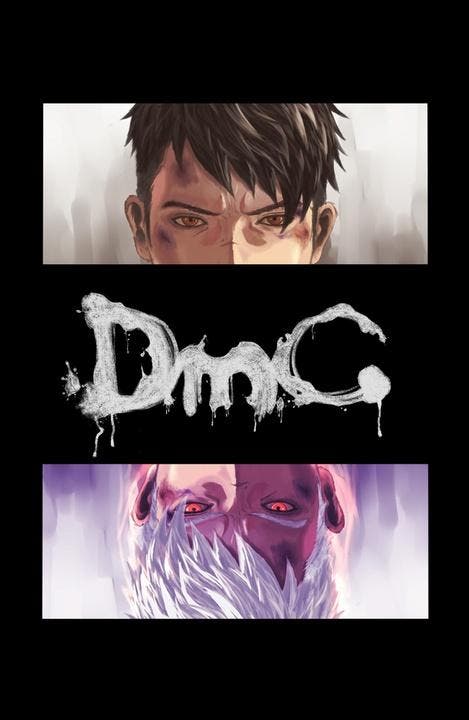
"But with all other aspects, especially something as striking as the hair, we wanted to explore why that might be the case. So even something as iconic as the hair, we thought, well, is there a story we can tell about that? We came up with some thoughts and ideas. There have been clues towards that in materials we've released over time, but I can't answer that question without giving away spoilers. That was a definitive statement of intent: this is Dante's younger years and we want to tell a story that hasn't been told."
The thing about Dante's hair is that it's a focal point for a larger, more complex distrust of the project from hardcore Devil May Cry fans. The new DmC is made by a western developer, not Capcom Japan. How can a western developer do the combat justice? How can a western developer create a DmC game without it being dumbed down, guided by some soulless executive? And just look at Dante. Just look at him. He's lost his charm. He's mopey. He's an emo. He's a kid. He's a smouldering vampire. He swears too much. He's just, well, annoying.
"You're not old enough to have learnt your mortality," lead audio designer Tom Colvin says. "You've not fallen over and hurt yourself enough times to know you want to avoid doing that. You've still got plenty of mistakes to make in your life but that gives you an enormous amount of freedom. That freedom from responsibility, Dante's the pinnacle of that. He has no responsibilities. He doesn't care what's going to happen to him tomorrow. And he doesn't care about anything or anyone.
"That's part of his journey as a character in this game. He matures. He learns, to a certain degree, what it means to have a responsibility. And he learns what it means to care about someone else. At the beginning of the game he doesn't have any of those aspects to his character. But we know once you get to the end of DmC he's got some very clearly defined goals, some good friends and some enemies as well. You know who they are and he knows what he's going to do with his life. There's a big change."
"In Spider-Man, because he becomes Spider-Man with the proper suit, you have a moment when he's on top of a building and he only has a bag, a mask he took from a shop and trainers," Taini says. "You feel, ah, cool, he's going to be Spider-Man, but he's not yet. We wanted Dante like that. Okay, he's just realised he's got the power, what is he going to be later on we don't know yet, but right now we've got this character, which is a normal guy. It's just he's been through a bad situation in the past."
Bloody hell
Tameem is aware of all of all the complaints, concerns, shouting and angry forum posts. And he admits they're valid. "Valid in a sense that Capcom has 20 years of history in fighting games," he says. "It's in their DNA. They've got this ingrained knowledge of mechanics and responsiveness that is not that common in western games, where we put the emphasis more on things looking smooth and animating correctly than on the arcade sensitivities. That was a big learning curve for us and they were happy to share all their inner secrets and their philosophy on combat development. We were open to that. We were grateful for that transference of knowledge. We embraced it. We're a better studio because of it."
When you get that kind of force of backlash at the start, you do question whether you're doing the right thing. But it's then important to go back to the original decisions of why you're doing things and whether you're doing those things for a valid reason and whether that's going to pay off in the end
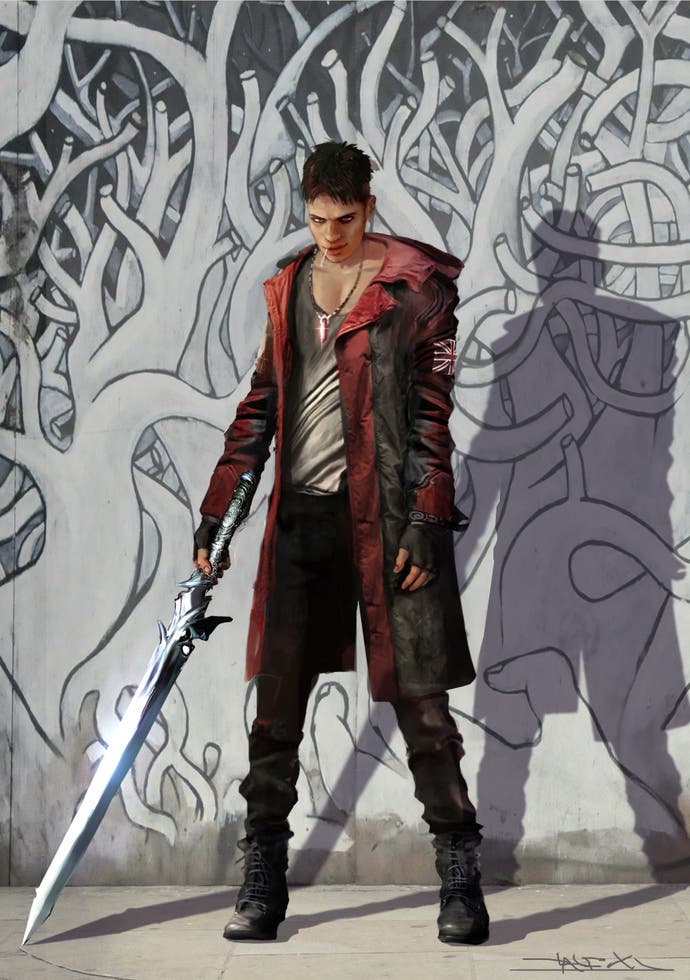
Did he ever have a crisis of confidence, perhaps when the hate seemed overwhelming, the Internet at its most potent?
"You mean other than crying into my pillow at night? When you get that kind of force of backlash at the start, you do question whether you're doing the right thing. But it's then important to go back to the original decisions of why you're doing things and whether you're doing those things for a valid reason and whether that's going to pay off in the end.
"The proof is in the pudding when you get your hands on the game and you see Dante in this world. Does he fit in this world and universe? I would say because it's a new direction, a new western perspective, he does. Whereas if you took this Dante and put him in the Japanese series he would look out of place. Equally if you took the original Dante and put him into this world, the world we created, he would look out of place. We were careful not to be reacting to the wrong things. Otherwise we could have muddled the route of what we were trying to achieve. All credit to Capcom for not jumping on the bandwagon of negativity when they could easily have done so.
"I feel like we were given a mission to reinvent the Devil May Cry universe, and restart it from a different perspective, a new entry point. I feel like we stuck to that, which is good, because it means we had confidence in our ideas and our direction despite the sometimes overwhelming feedback we were getting."
Generation Y should I care?
The new Dante is Generation Y, a term coined in the nineties to describe the teenagers of the day. This is not meant as a slur, although the connotations are often negative. Why should I care, asks Generation Y. What's in it for me? Early on in DmC, Dante's twin brother Vergil has trouble recruiting the demon slayer into The Order, the organisation established to rebel against Mundus and the demons. "He doesn't seem to care," Kat, a witch who guides Dante as he embarks on his journey of self discovery, observes. She's right. He doesn't.
But eventually Dante does care. Generation Y are not averse to hard work. You just have to coax it out of them in a different way. Sure, you just want to grab the new Dante by the scruff of the neck and scream, grow up! But that's not going to work. You need to appeal to his wants, his needs. Why should he care? His twin brother Vergil makes him care and as he does you, the player, find yourself begrudgingly coming around to this new Dante, the boy who begins Generation Y raw but ends Generation Y wise.
It seems like unless you've got a jock-style physique you're automatically emo in video games, which isn't right. By that standard Ryan Gosling's an emo. So I don't get it
"Rebellion is the name of his sword and that's the attitude he has," Tameem says. "That's really the theme of the game. Rebellion in all its forms happens really young. When you look at icons of rebellion, like the punk movement, The Pistols, The Clash, the Jack Kerouac novels and James Dean, these are all characters that come out of their more idyllic teenage years into a totally oppressive or dysfunctional adulthood. That's where rebellion really has its strength - that energy of youth and that fury. So it felt like that was a good starting point."
Is there a part of Tameem that's in Dante?
"I never grew up in the kind of poverty that requires rebellion."
He's been described as emo...
"That's a strange one. I had to look up what emo was."
Really?
"Yeah. I'm familiar with goth and industrial, but not emo. I had to look up what it was."
You haven't seen Twilight?
"I have since then, because everybody said he looks like the guy in Twilight, so then I watched Twilight to see what they're on about.
"First off, talk about demonising a sub-culture. I'm not going to say emo is bad. Each to their own. There are loads of tribes around. But I can't see what's emo about him. He's a young guy, dresses pretty down to earth. He was maybe a bit skinnier when we first announced him, which is maybe where it came from, but he's not really now. He's a pretty well-formed, buff, pretty athletic guy.
"It seems like unless you've got a jock-style physique you're automatically emo in video games, which isn't right. By that standard Ryan Gosling's an emo. So I don't get it. I think it's a meme that's just been self-perpetuating. When it's said it's said with a distaste. I think it's a little unfair really."
How would you describe him then?
"He's a rebellious character. He represents rebellious youth and energy and violence against an oppressive demon controlled regime. He is Dante."
In one cut scene, our star turns to the camera and says, "My name is Dante." Better get used to it.
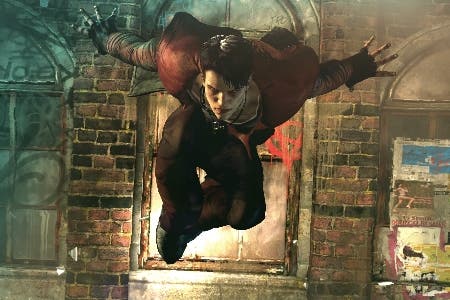

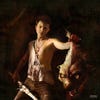




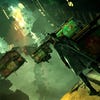



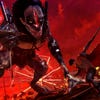



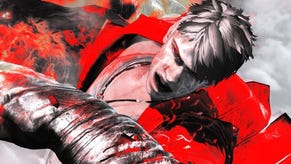
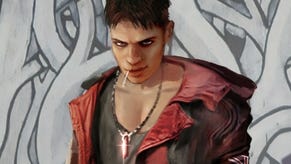



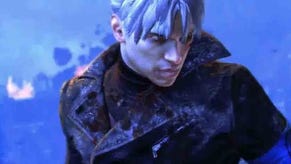
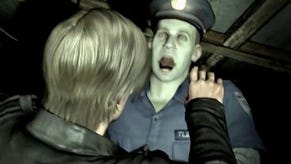



.png?width=291&height=164&fit=crop&quality=80&format=jpg&auto=webp)



